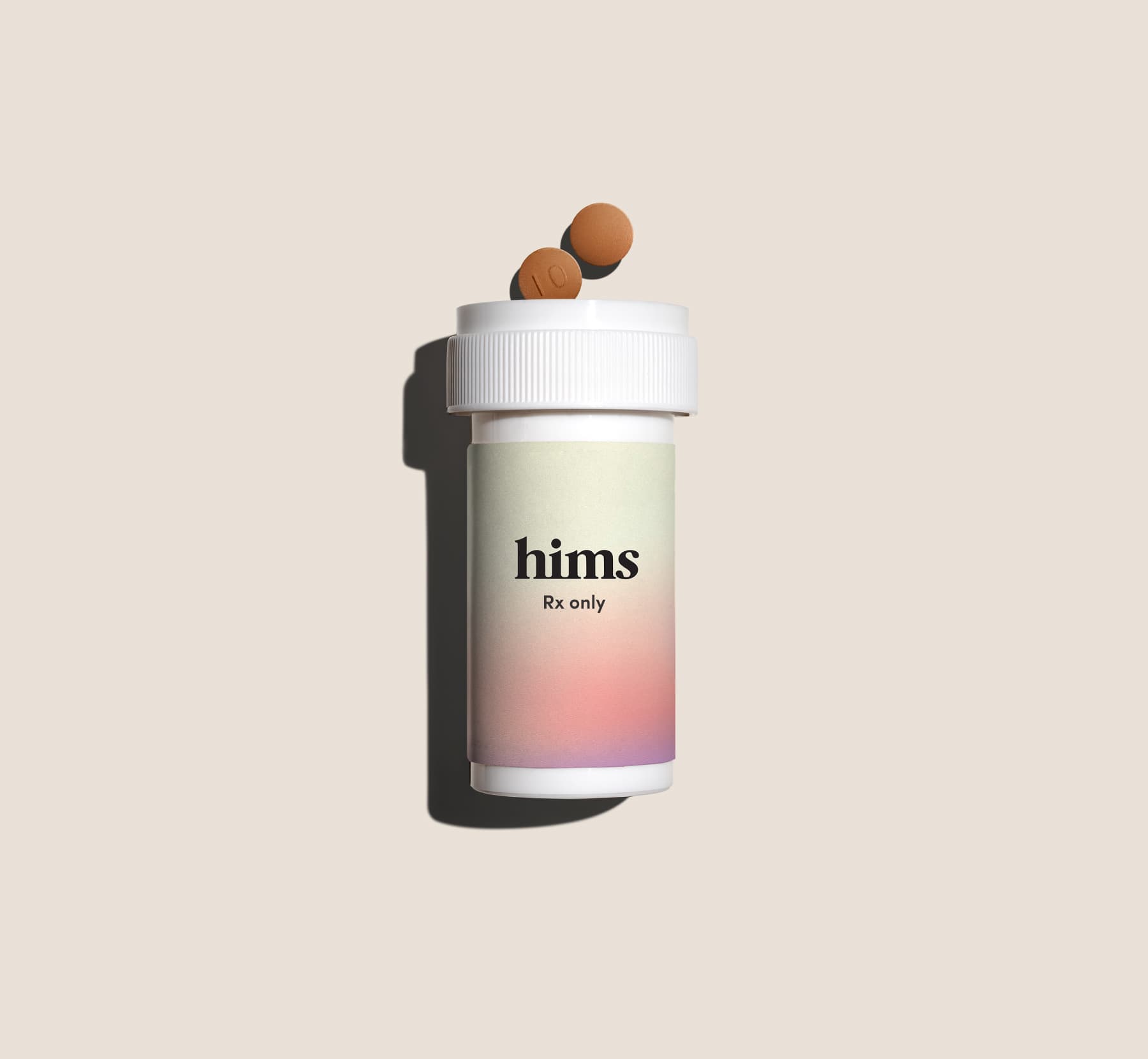FDA approved
Generic for Celexa®Citalopram
Starting at $49/mo
Getting psychiatric care for anxiety and depression has never been simpler. Consult with a licensed healthcare provider to determine whether a medication like citalopram could be right for you.Details

Prescribed by a healthcare provider experienced in treating anxiety & depression, if appropriate

Unlimited provider messaging

Unlimited dosage adjustments
What is citalopram?
Citalopram is a prescription drug and was among the first few SSRI (selective serotonin reuptake inhibitor) antidepressant drugs on the market. The FDA first approved citalopram in 1998. It is sold under the brand name Celexa® and primarily prescribed to treat depression.
Citalopram uses
Citalopram is FDA-approved to treat depression. In clinical trials, citalopram was shown to be effective both as an acute treatment and over longer periods of time.
How citalopram works
Citalopram increases levels of a mood-enhancing chemical called serotonin in the brain. Like other SSRIs, citalopram lowers the level of serotonin that neurons reabsorb, which results in more free serotonin in the brain. For some, this can ease their symptoms with results like improved mood or reduced panic attacks.
Select your plan
try it out
How to get citalopram online with Hims
1. Simple consultation
Complete an online mental health assessment and intake form, then connect with a healthcare provider through our platform.
2. Free delivery
Get citalopram shipped to you for free, if prescribed.
3. Ongoing support
Enjoy secure, ongoing support 100% online—including refills and unlimited dosage adjustments.
Citalopram 101
What’s an SSRI?
Selective serotonin reuptake inhibitors (SSRIs) are a type of antidepressant that work by increasing levels of a mood-affecting chemical called serotonin in the brain which helps to improve your symptoms. Nice, right?
The science of citalopram
Your brain naturally produces chemicals that make you feel good, like serotonin. Citalopram keeps neurons from reabsorbing this chemical so that you have more of it available in your brain. For some, this can ease their symptoms with results like improved mood or reduced panic attacks.
Featured reviews
Real results from guys like you
* Results vary. Data were self-reported between 11/26/2021 and 08/01/2022 by Hims customers who 1) signed up between 11/04/2021 and 05/04/2022; 2) were prescribed antidepressant medication by a provider after their first consultation on the Hims platform; and 3) had an active subscription for such antidepressant medication through the Hims platform within 90 days after signing up.
Frequently asked questions about citalopram
How quickly does citalopram work?
What form does a dose of citalopram come in?
Is citalopram prescribed for anxiety?
Is citalopram the same as escitalopram?
What are some safety warnings for citalopram?
Does citalopram have drug interactions?
How long do citalopram withdrawal symptoms last?
How do you buy citalopram online?
Important Safety Information
WARNING: SUICIDALITY AND ANTIDEPRESSANT DRUGS
Citalopram and other antidepressant medicines may increase suicidal thoughts or actions, especially in some people 24 years of age and younger within the first few months of treatment or when the dose is changed. If you are experiencing a mental health crisis, please call or text 988 to be connected with help, or go to your nearest hospital emergency department. Pay particular attention to such changes when citalopram is started or when the dose is changed.
- are allergic to citalopram, or any of the ingredients in Citalopram
- Take any medication for Parkinson’s Disease or depression called monoamine oxidase inhibitors (MAOI), or if you have stopped taking an MAOI in the last 14 days as they may cause a dangerous increase in blood pressure. MAOIs include, but are not limited to: isocarboxazid, phenelzine, rasagiline, selegiline, tranylcypromine
- Take St John’s Wort or 5-Hydroxytryptophan (5-HTP)
- are on methadone
- are drinking large amounts of alcohol
- are using or abusing recreation drugs or prescription medications
- increased bleeding (gums, unexplained bruising)
- low sodium blood levels (symptoms may include headache, weakness and difficulty remembering or concentrating)
- teeth grinding
- seizure
- angle closure glaucoma (symptoms of angle closure glaucoma may include eye pain, changes in vision, swelling or redness in or around eye)
- QT prolongation and ventricular arrhythmia including Torsades de Pointes (changes in the electrical activity of your heart; symptoms may include fast, slow or irregular heartbeat, shortness of breath, and dizziness or fainting)
- serotonin syndrome (symptoms may include shivering, diarrhea, confusion, severe muscle tightness, fever, seizures, and death)
- Aspirin or nonsteroidal anti-inflammatory drugs (e.g. ibuprofen, naproxen, celecoxib, diclofenac)
- Any other serotonergic medications including: trazodone, migraine medications (triptans), pain medications (tramadol), antibiotic linezolid, amphetamines
- Warfarin or other anticoagulant therapy
- certain antiarrhythmics: quinidine (Quinidex Extentabs®, Quinaglute®, Quinalan®), procainamide (Procanbid®, Pronestyl®, Pronestyl-SR®), amiodarone (Cordarone®, Pacerone®), sotalol (Betapace®, Sorine®)
- certain antipsychotics: chlorpromazine (Thorazine®), thioridazine (Mellaril®)
- certain antibiotics: gatifloxacin (Tequin®), moxifloxacin (Avelox®)
- methadone
- Mix medicines (liquid or pills; do not crush tablets or capsules) with an unappealing substance such as dirt, cat litter, or used coffee grounds;
- Place the mixture in a container such as a sealed plastic bag;
- Throw away the container in your trash at home; and
- Delete all personal information on the prescription label of empty medicine bottles or medicine packaging, then trash or recycle the empty bottle or packaging.
741-741
If you're in emotional distress, text HOME to 741-741 to connect with a Crisis Text Line counselor immediately.
911
If you’re having a medical or mental health emergency, call 911 or go to your local ER.
* Controlled substances, including amphetamines (such as Adderall) or benzodiazepines (such as Xanax and Valium) are not available through our platform.
